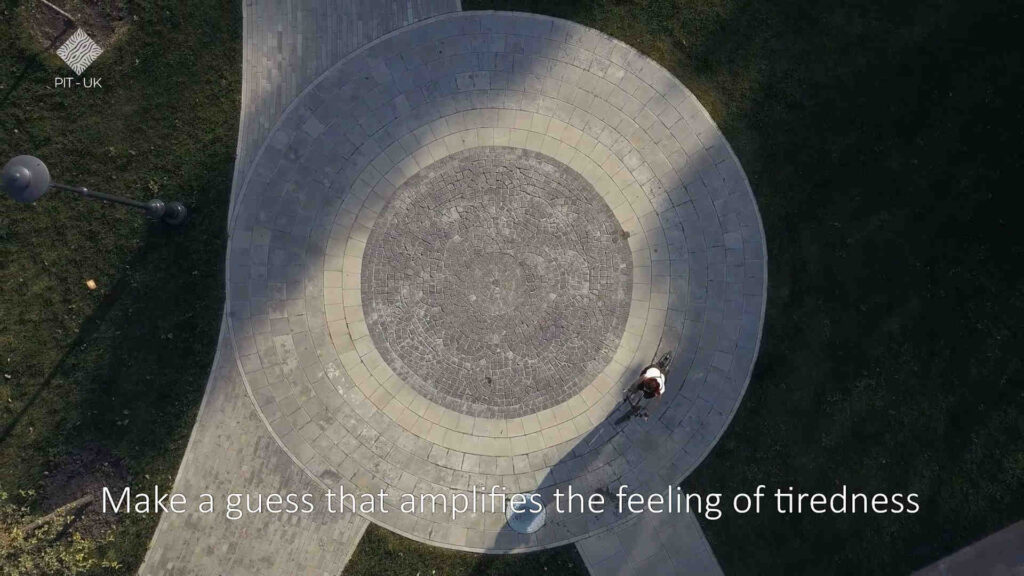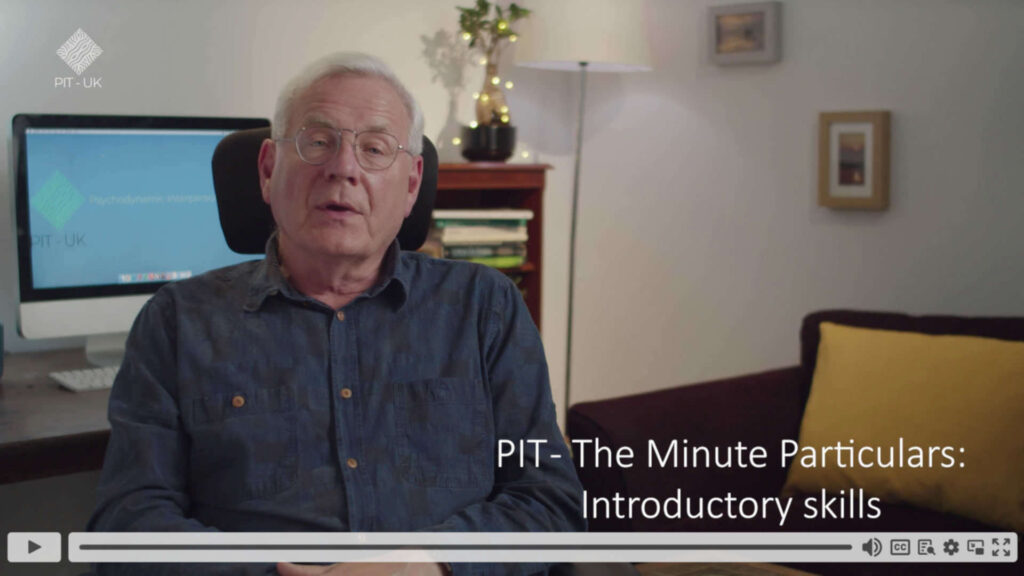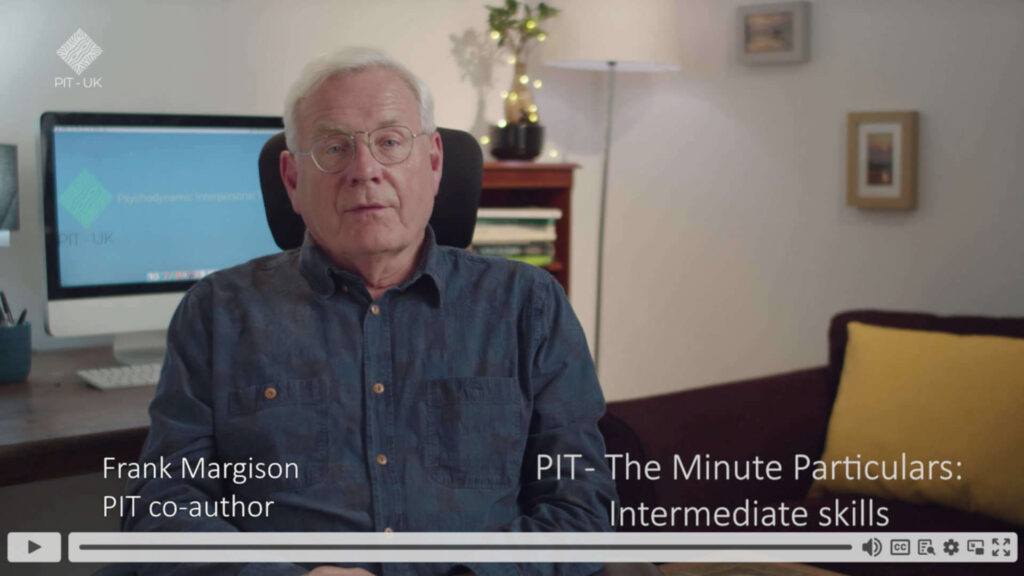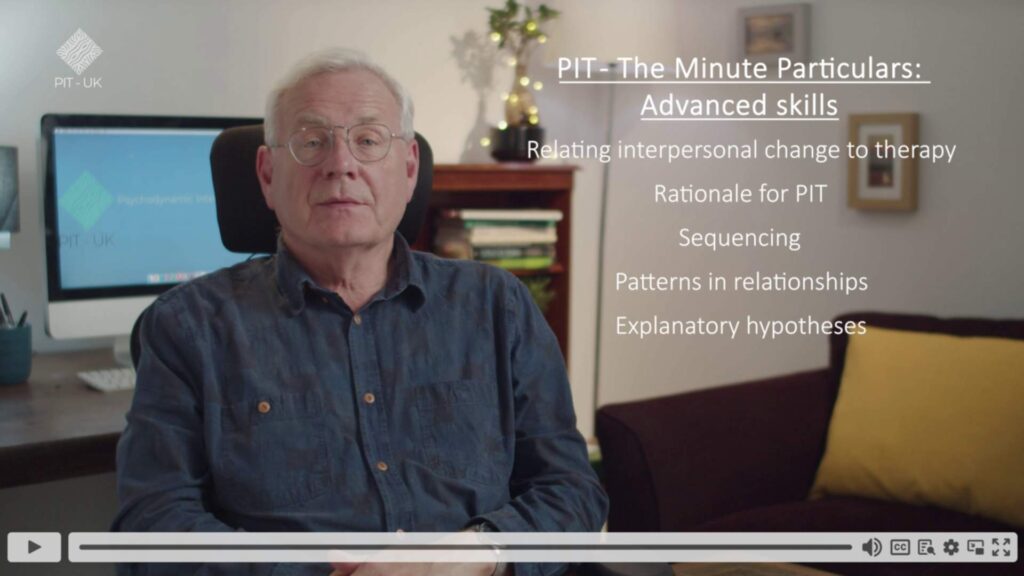This series of three films is called “Minute Particulars” to refer to the William Blake comment about attention to detailed observation.
There are three films of increasing complexity.
If you are a trainer there is more information on how to use the films as part of a learning programme at the page for Trainers here
You must be logged in with a suitable subscription to watch these films.
If you have a suitable subscription, please log in here. If you don’t, please contact us.
Practising the skills
But there is not much point learning skills if we cannot put them to use, so each film includes practice examples where you can try out the different ideas.
When this symbol appears it signals a brief pause for you to say what you would have said in the therapist’s place.
If you need longer to discuss the options, for example in a group discussion, just pause and then continue the film.

You can try out what you might say in each particular situation. There is no right or wrong answer in this situation but over time you can see that your responses become more natural and fit better with the prompt- initially the responses are prompted within the film but gradually there is more space to give a fuller, more spontaneous response
We recommend that you actually say the words out loud if possible to become used to actually saying things that may seem unfamiliar.
It is helpful where possible to view these films as a small group, ideally with someone familiar with this approach so you can look at the options in a safe environment and gradually become confident in your ability to phrase things in a natural way.
You must have a suitable subscription – and be logged in – to view these films.
If you have a suitable subscription, please log in below. If you don’t have a subscription please contact us.
Login



